I was looking through some 1943 issues of the Canadian Review of Music and Art and came across this page of ads in the April issue, volume one number three:
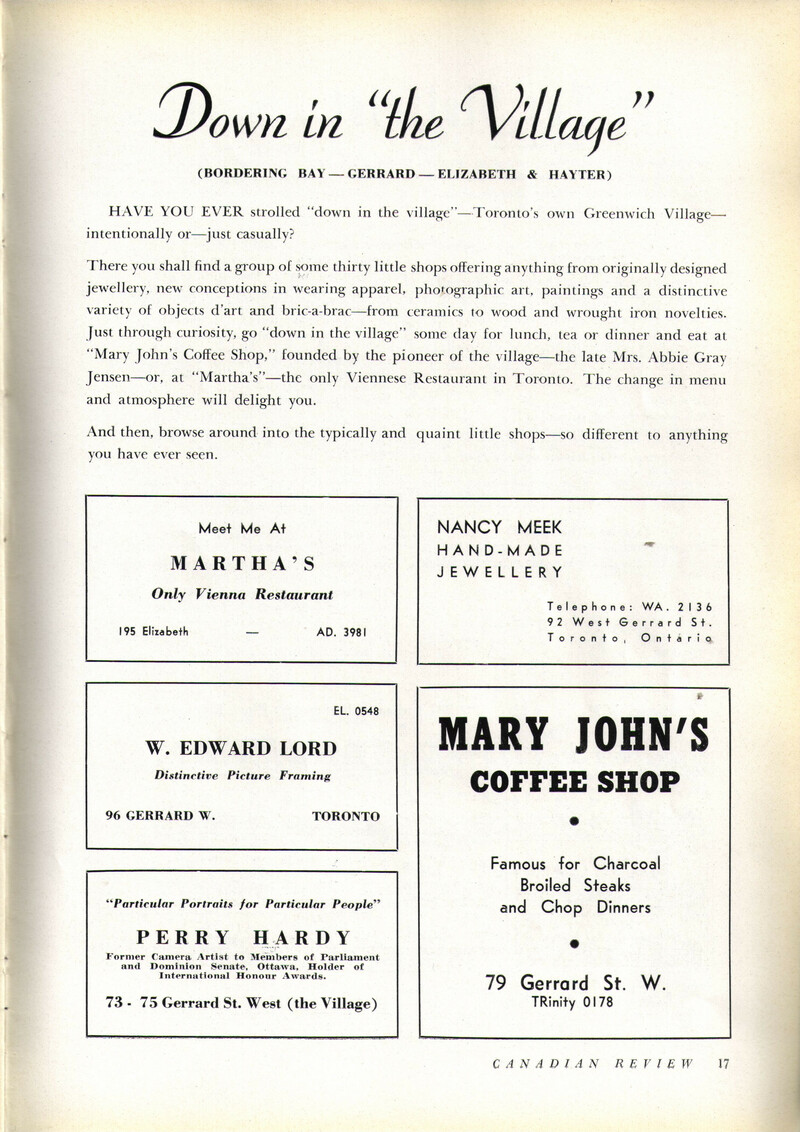
Have you ever strolled “down in the village”—Toronto’s own Greenwich Village—intentionally or—just casually?
There you shall find a group of some thirty little shops offering anything from originally designed jewellery, new conceptions in wearing apparel, photographic art, paintings, and a distinctive variety of objets d’art and bric-a-brac—from ceramics to wood and wrought-iron novelties. Just through curiosity, go “down in the village” some day for lunch, tea or dinner, and eat at “Mary John’s Coffee Shop,” founded by the pioneer of the village—the late Mrs. Abbie Gray Jensen—or at “Martha’s”—the only Viennese Restaurant in Toronto. The change in menu and atmosphere will delight you.
And then, browse around into the typically and quaint [sic] little shops—so different to anything you have ever seen.
(Whoever proofread the ads should have added a hyphen between “charcoal” and “broiled” in the Mary John’s ad.)
I’d never heard of this village, or Mary John’s, but John Lorinc’s article Looking back at Mary Johns, an artists’ haven in mid-century Toronto (Toronto Star, 19 July 2015) explains all about it in one of his typically excellent pieces on Toronto and its history.
The inn opened in the 1920s across from Hester How Public School and the Elizabeth St. playground, which sat on the site of the new wing of the Hospital for Sick Children.
A great source for detailed maps of older Toronto are the Goad’s fire atlases. Here I’ve picked out details from 1924, Plate 15 and 1924, Plate 12 to show the north and south sides of Gerrard St. West and Elizabeth St. Unfortunately Gerrard is the dividing line between two maps so you can’t see both sides of the street at once (at least, not without some digital editing, which I didn’t attempt).
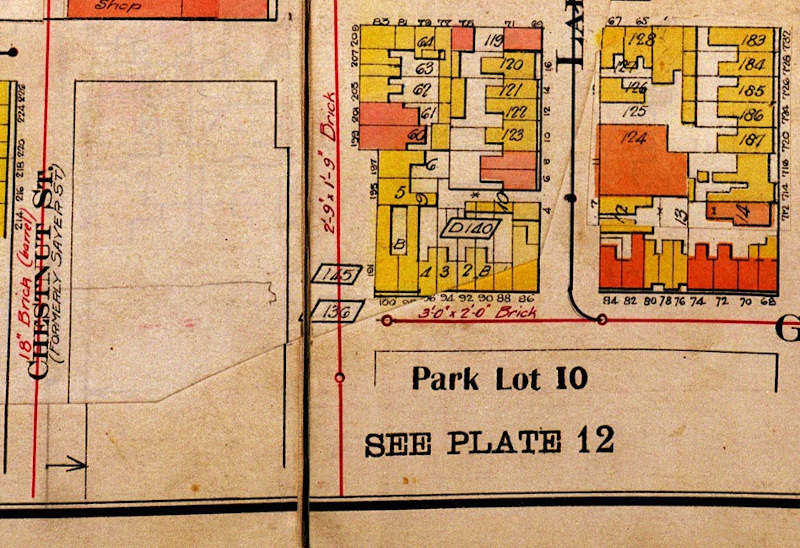
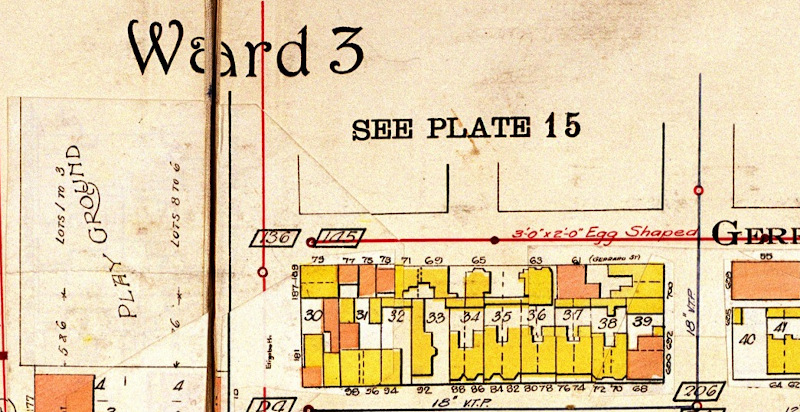
We see 79 Gerrard St. West at the south-east corner of Gerrard and Elizabeth, across from the playground. That’s Mary John’s.
OpenStreetMap centred on Elizabeth and Gerrard shows what the area looks like now. Almost every house is gone. The northeast corner of the intersection is a large parking lot, but east of it, across the small street, is Jimmy’s Coffee in an original building. The southeast has a big office tower.

Lorinc continues:
The restaurant, which had adjoining dining rooms and tables packed closely together, catered to hospital and office workers, as well as local residents. [Daughter of the owners Lynda] Franklin, now a 71-year-old retired high school teacher, recalls typing out the menus on carbon paper. Her parents served hearty dishes like Salisbury steak, shepherd’s pie and charcoal blackened chicken, as well as salad, mashed potatoes and that staple of Anglo-Saxon cuisine, peas and carrots. Desserts included pie, ice cream and homemade butter tarts that, Franklin says with a chuckle, “were known throughout the land.”
Charcoal-broiled chicken indeed!
When she was growing up, Franklin’s friends included the children of some of the Village artists (and Mary Johns regulars), such as Judy Pocock, whose mother, Nancy Meek Pocock, was a well-known metal artist and peace activist.
For more details I looked in the 1943 City Directory to see who was listed. (See the Toronto Public Library’s Digital Toronto City Directories list for more.) On the north side of the street, across from Mary John’s, there’s Nancy Meek at 92 (she’s also in the ad above), in the same building as Mrs. Helarion E. Adams, “aura reader.”
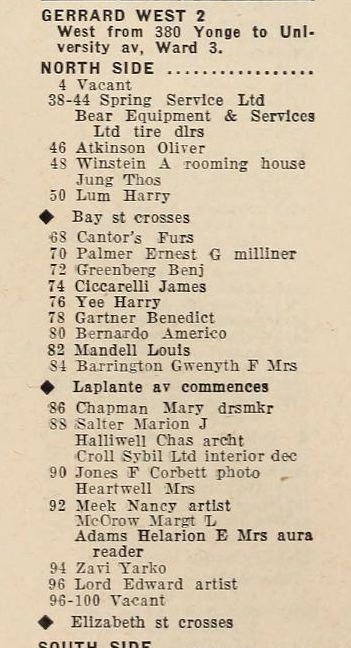
And on the south side at 73–75 is Perry Hardy (“Percy” in the directory, but “Perry” in the ad above), who does “Particular Portraits for Particular People.” And Mary John’s Coffee Shop is at 79, along with Mrs. Helen Pope, “tea cup reader.”
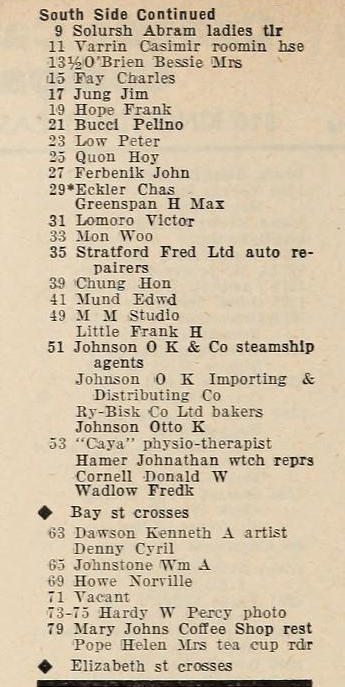
There’s more about the village in Nicole Baute’s Our lost Greenwich Village (Toronto Star, 26 December 2008), Rick McGinnis’s Vanished Bohemia: Remembering Gerrard Village and the Golden Age of the Coffee House (14 October 2009) and in John Lorinc’s chapter “Before Yorkville” in The Ward: The Life and Loss of Toronto’s First Immigrant Neighbourhood (edited by John Lorinc, Michael McClelland, Ellen Scheinberg and Tatum Taylor; published by Coach House Books, 2015) (which I own but have neglected reading; I will remedy that soon).
Mary John’s ran ads regularly in the Canadian Review of Music and Art. Here’s another one from issue number six, October 1942.
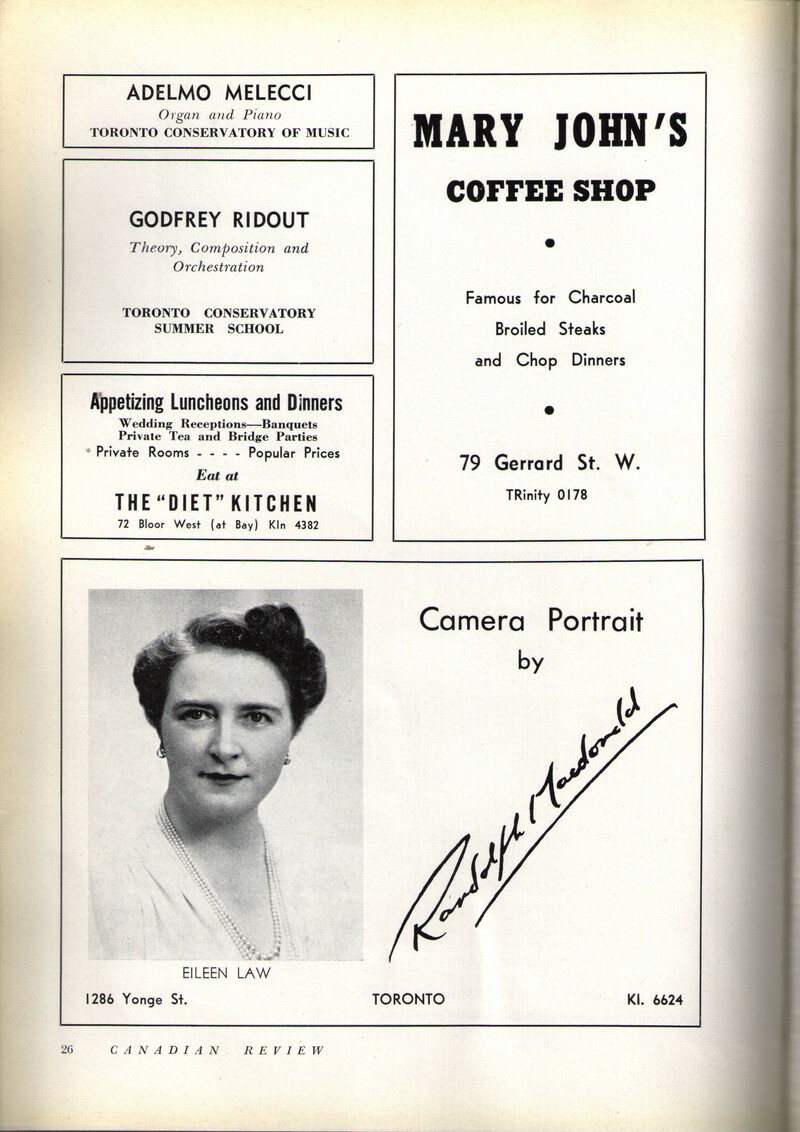
Godfrey Ridout was 24 at the time. Adelmo Melecci and Eileen Law both deserve Wikipedia entries. Randolph Macdonald and Ridout were both members of the Arts and Letters Club of Toronto, as I am now.
 Miskatonic University Press
Miskatonic University Press